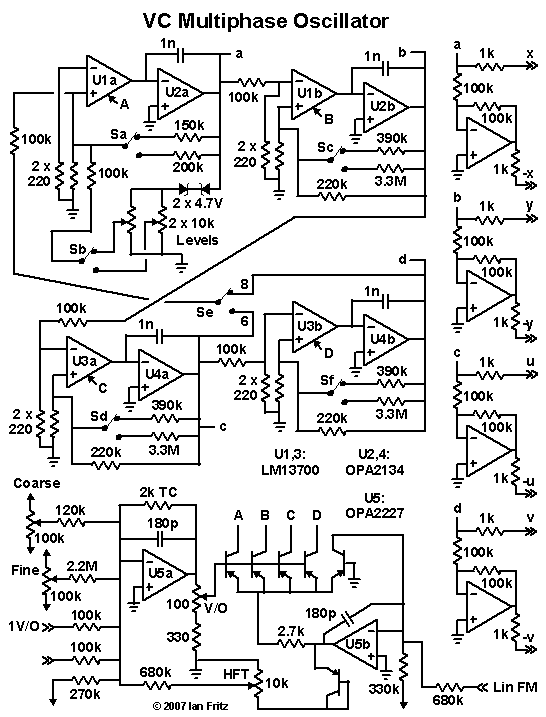VC Multiphase Oscillator
This multiphase oscillator may be switched between 6-phase and 8-phase operation. Of course by using appropriate subsets of the six or eight signals, 2-phase, 3-phase or 4-phase operation is easily achieved.
The circuit is illustrated below. At first glance this looks like a four-pole filter with feedback. But look again -- it is really quite different and more subtle than that. The difference? This circuit has negative feedback around each individual stage. The feedback resistors are carefully chosen so that the linear part of the system (small signals) oscillates, but just barely. On startup the oscillations build up slowly over dozens of cycles.
At large signal amplitudes the zener diodes begin to conduct, adding additional negative feedback that prevents further growth in amplitude. In other words, large amplitude signals decay over time. The delicate balance between these opposing forces cause the system to perform stable, high-purity sinusoidal oscillations at a finite amplitude. The amplitudes are adjusted by the two "Level" trimmers, which vary the strength of the nonlinear feedback.
The six-pole switch (Sa-Sf) allows a choice between six phase and eight phase operation. Using alternating outputs give three and four phase operation.
Here are three audio clips of the 6-phase oscillator driving a wave scanner (basically, six VCAs with amplitudes controled by the oscillator outputs. The first clip demonstrates straightforward scanning among three slightly different waveforms. The second involves varying the timber of four waves using four stages of the scanner. For the final clip, the scanner is used to vary the amount of vibrato (FM) of three VCOs along with the modulation of two VCFs and a VCA.
Clip 1
Clip 2
Clip 3
Back Home

